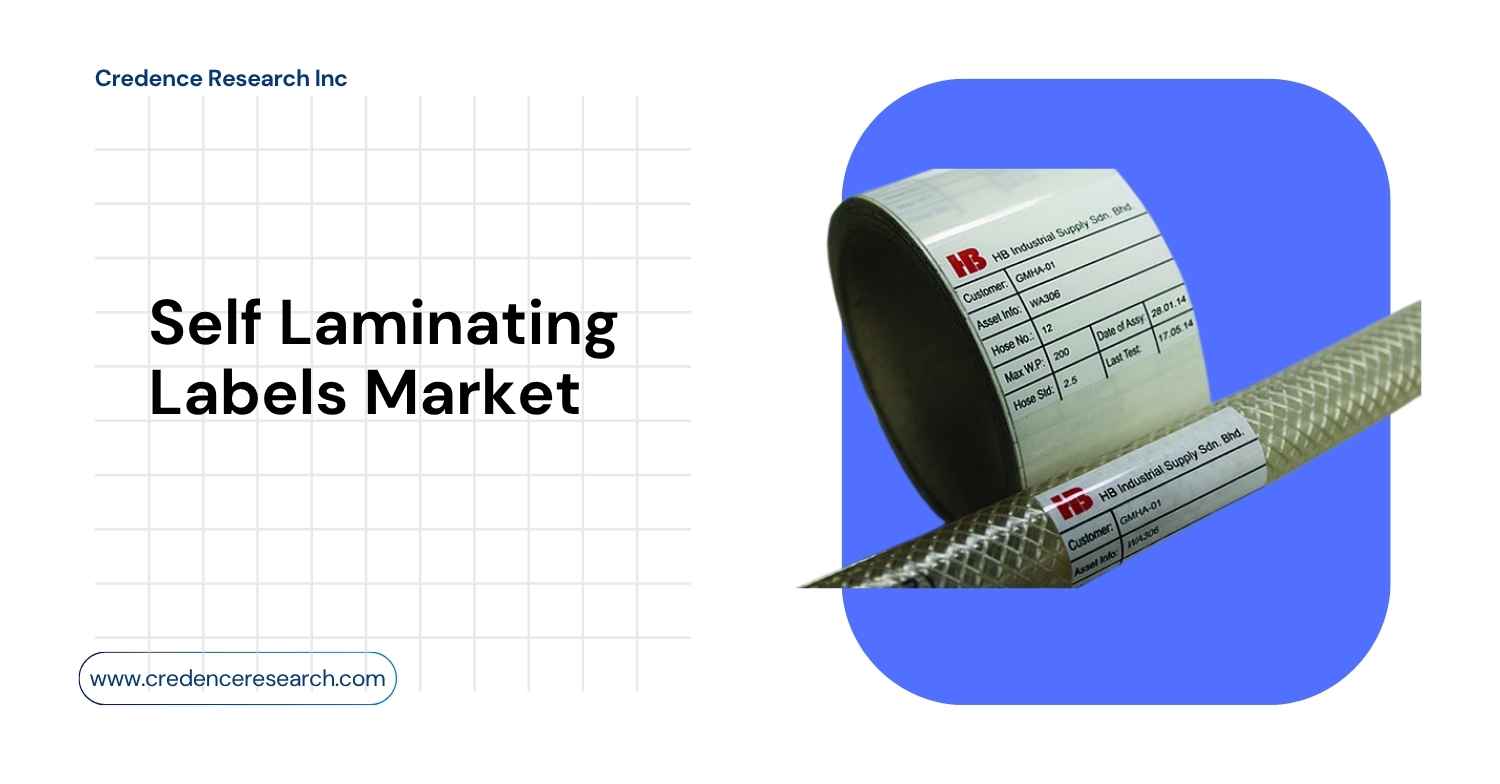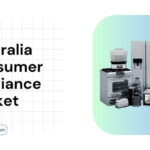According to Credence Research’s latest report titled “Global Self Laminating Labels Market: Growth, Share, Opportunities & Competitive Analysis, 2024–2032”, the market is projected to grow from USD 164,078 million in 2024 to USD 248,014.6 million in 2032, expanding at a compound annual growth rate (CAGR) of 5.3% from 2024 to 2032.
Self laminating labels are widely adopted across multiple industries that require long-lasting labeling solutions. These labels are constructed with a clear laminate overlay that protects printed information from harsh environmental exposure. Industries such as electronics, medical, automotive, and logistics rely heavily on these labels to maintain traceability, compliance, and readability over extended periods.
Growing Demand for Durable Identification in Regulated Environments
One of the main drivers of the global self-laminating labels market is the rising need for durable, long-term identification across regulated sectors. Standards such as UL 969 mandate endurance and legibility after exposure to solvents, temperature extremes, and abrasion. Industries like electronics, energy, transportation, and medical devices rely on labels that remain readable and adhere securely throughout a product’s lifespan. The UL Marking and Labeling Systems certification evaluates these properties through tests for adhesion, defacement, and environmental resistance under diverse conditions.
Conventional adhesive labels often fail when subjected to solvents, extreme temperatures, or mechanical wear. Durability rub tests using water, alcohol, and petroleum spirit reveal that unprotected prints can fade or blur quickly. In contrast, self-laminating labels feature a clear wrap-over layer that seals the print, protecting it from environmental and chemical damage. Suppliers design these overlaminates to resist abrasion, scuffs, and solvents, ensuring long-term readability for wires, cables, and equipment.
In manufacturing and assembly environments, reliable component identification supports quality control, traceability, and compliance. UL 969 verifies label permanence on representative surfaces to prevent loss of information during production and use. Failures in label integrity can cause downtime, rework, or regulatory non-compliance. Therefore, endurance testing includes water immersion, temperature cycling, and chemical exposure to ensure lasting adhesion and legibility.
Self-laminating formats are especially effective for wire and cable identification, combining a protected print zone with a transparent laminate. They withstand water, oil, grease, and chemical contact, making them suitable for power plants, clean rooms, and field operations. Technical datasheets often specify compatibility with sterilants and solvents, with performance ranges from sub-zero temperatures to sustained heat exposure.
Medical and laboratory settings add further challenges due to sterilization, refrigeration, and frequent handling. Self-laminating materials are engineered to survive steam autoclaves at 121 °C, gamma irradiation, and ethylene oxide sterilization, as well as freezing to −40 °C. They maintain readability through repeated cleaning cycles, aligning with FDA regulations and 21 CFR 801.45, which require durable labeling on reusable medical devices.
Growing infrastructure and power distribution investments are boosting demand for wire and cable labeling. Standards like ANSI/TIA-606 mandate uniform identifiers in telecom and data centers for scalable traceability. Self-laminating cable labels are favored for their resistance to fading and flexibility on curved surfaces, performing reliably from −18 °C to 135 °C. As wiring complexity grows, durable machine-printed labeling ensures maintenance accuracy and system reliability.
Browse market data figures spread through 220+ pages and an in-depth TOC on “Self Laminating Labels Market”
Adoption of Printable and Pre-printed Self Laminating Labels in Logistics and Warehousing
A significant trend shaping the self laminating labels market is the adoption of printable and pre-printed formats within the logistics and warehousing sector. With the expansion of global trade, e-commerce, and digital inventory systems, supply chains are under pressure to improve visibility, reduce errors, and accelerate throughput. Labeling plays a vital role in inventory tracking, order fulfillment, and last-mile delivery. Self laminating labels help meet these goals by offering a durable, high-contrast labeling surface that remains readable despite handling and environmental exposure.
Thermal transfer printable self laminating labels are now commonly integrated with warehouse management systems. These labels can be encoded in real-time with serial numbers, barcodes, and QR codes, supporting accurate tracking through the distribution process. This enables companies to manage inventory flow, minimize returns, and prevent product losses caused by mislabeling. Labels are also used to mark bins, racks, pallets, and returnable containers. The self-laminating feature ensures that information remains protected during transportation, cleaning, or repeated use.
Pre-printed variants are gaining popularity in high-volume operations due to their ability to speed up workflows. In operations where products or materials follow standard labeling formats, pre-printed self laminating labels reduce the need for on-site printing, saving time and reducing printer maintenance. This is especially beneficial for third-party logistics providers and cross-docking facilities handling thousands of units daily.
The trend is supported by automation in material handling and smart logistics. Labeling accuracy is critical when robots and conveyors are involved in product movement. Errors caused by smudged or unreadable labels can disrupt the flow, causing inefficiencies. With rising pressure to meet delivery timelines and reduce returns, companies are investing in labeling solutions that combine flexibility, durability, and print clarity.
This growing use of self laminating labels in logistics and warehousing is also driven by compliance with labeling regulations for cross-border shipments. International transport often requires labels to remain legible despite temperature changes, humidity, or extended transit times. Self laminating formats support regulatory compliance and reduce the need for relabeling, thus cutting operational costs.
High Costs of Materials and Equipment Limiting Broader Adoption
Despite growing demand, the high cost of self laminating label materials and associated equipment presents a significant challenge to broader adoption. These labels use multiple layers, including high-performance adhesives and transparent laminate films, which increase production costs. Compared to standard paper or polyester labels, self laminating versions require more complex manufacturing processes. As a result, pricing is higher, especially for specialty variants with chemical resistance or extreme temperature tolerance.
Smaller enterprises, startups, and companies in cost-sensitive sectors often hesitate to switch to self laminating labels due to these added costs. Labeling budgets are constrained, particularly in industries with low margins or where labeling does not directly contribute to product value. In such settings, firms may continue using cheaper labels despite the risk of early failure.
Additional costs stem from the need for compatible thermal transfer printers and specific ribbon materials. Installing new printing infrastructure or modifying existing systems to accommodate self laminating labels can be expensive. Technical support, operator training, and maintenance also contribute to the total cost of ownership. These factors slow adoption in regions or sectors where labeling volumes are low or sporadic.
Moreover, print quality issues can arise if label and ribbon combinations are mismatched, resulting in poor durability or adhesion. This makes it essential for users to invest time and resources in testing and standardizing label configurations. The additional validation work is often viewed as a barrier, particularly in smaller operations with limited technical capacity. Until cost structures are reduced through economies of scale or material innovations, these challenges are expected to persist.
Market Segmentation
By Application
- Industrial and Electronics
- Retail and Consumer Goods
- Automotive
- Logistics and Transportation
- Food & Beverage
- Medical and Healthcare
- Cosmetics and Personal Care
By Type
- Write-on Cable Labels
- Printable Cable Labels
- Pre-printed Cable Labels
By Geography
North America
- U.S.
- Canada
- Mexico
Europe
- Germany
- France
- U.K.
- Italy
- Spain
- Rest of Europe
Asia Pacific
- China
- Japan
- India
- South Korea
- South-east Asia
- Rest of Asia Pacific
Latin America
- Brazil
- Argentina
- Rest of Latin America
Middle East & Africa
- GCC Countries
- South Africa
- Rest of the Middle East and Africa
Key Players
Leading companies are focusing on improving label durability, ease of application, and printer compatibility. Innovations include solvent-resistant adhesives, low-temperature adhesives, and custom printable overlays. Some players are exploring eco-friendly options with recyclable and PVC-free materials. Key companies in the global market include:
- Avery Dennison
- CCL Industries
- UPM Raflatac
- 3M
- LINTEC Corporation
- Brady Corporation
- TE Connectivity
- Panduit
- HellermannTyton
These companies are expanding their global presence, offering localized product variants and technical support to meet regional requirements. Strategic acquisitions and investments in digital printing technologies also form a part of their growth plans.
About Us:
Credence Research is a viable intelligence and market research platform that provides quantitative B2B research to more than 2000 clients worldwide and is built on the Give principle. The company is a market research and consulting firm serving governments, non-legislative associations, non-profit organizations, and various organizations worldwide. We help our clients improve their execution in a lasting way and understand their most imperative objectives.
Contact Us
Credence Research Europe LTD
128 City Road, London,
EC1V 2NX, UNITED KINGDOM
Europe – +44 7809 866 263
North America – +1 304 308 1216
Australia – +61 4192 46279
Asia Pacific – +81 5050 50 9250
+64 22 017 0275
India – +91 6232 49 3207











